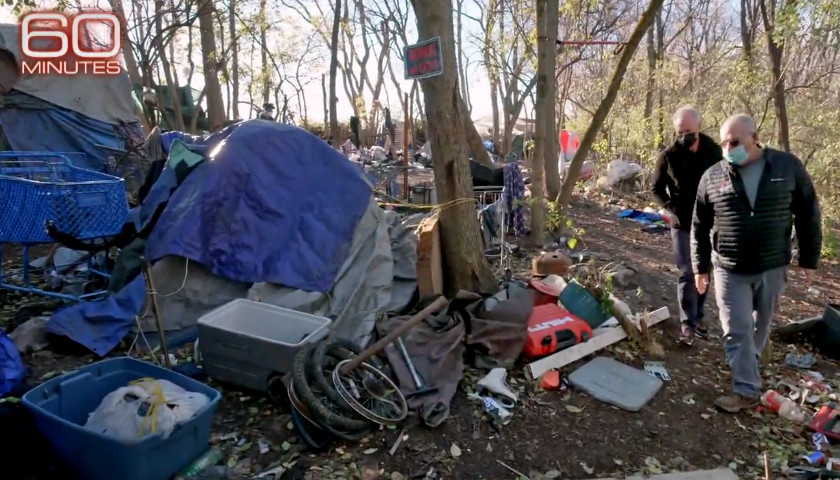Sunday night, CBS’ “60 Minutes” chronicled the struggle in the city of Columbus, especially among young people, during the COVID-19 lockdowns that cost many their livelihoods.
The center of the segment was 23-year-old Courtney Yoder, who before the pandemic was homeless, and had almost saved enough money from working to be able to move off the streets before the birth of her first child.
“Working actually was something good for me,” Yoder told Scott Pelley. “And then when I lost it, it was like, ‘Now I have nothing, you know what I mean, to look forward to.’ Because I actually felt good about myself. I felt accomplished. I felt like I was doing something in my life. I had stacked up three checks. I was actually trying. Then all that gets taken from me.”
Yoder was working in a restaurant, until it was forced to close due to the pandemic. Not only did she lose her job, but life as a homeless person became even more difficult. Since public buildings were closed, she couldn’t even go to the library.
The segment noted that the pandemic hit young, l0w-wage workers the hardest.
Steve Roth is a retired firefighter who works at Mount Carmel, a nonprofit hospital system that works with homeless people.
 “Before the pandemic hit, they were just makin’ it. They were just makin’ their bills. And now the rug’s pulled out from under ’em,” he said. “Those people that had multiple jobs even before things got bad.”
“Before the pandemic hit, they were just makin’ it. They were just makin’ their bills. And now the rug’s pulled out from under ’em,” he said. “Those people that had multiple jobs even before things got bad.”
According to 60 Minutes, Ohio’s unemployment claims skyrocketed during the lockdowns, and are higher now than the past five years combined, causing people to end up on the streets.
“There were a lot of places throughout the city where they could get resources,” Roth said. “Clothes, food, they could go somewhere to get warm, like a library. Those are done, they can’t have any of that stuff.”
Twelve-year-old Shawnahlee Archey, whose family resided in Columbus, told Pelley that her parents lost their janitorial jobs, forcing them to move into a minivan. They had to wait to move into a homeless shelter “because it had cut capacity for social distancing.”
That was often the case among shelters in Columbus, according to Ann Bischoff, CEO of Star House, a support center for people aged 14-24.
“We have typically pre-COVID, a range of partners who would come in and offer onsite education, onsite jobs,” Bischoff said. “Health care has fallen off as well. Typically, we would have 15 hours of medical care. Now they’re coming in, but it’s every other week.”
Yoder was a frequent guest at Star House.
“I felt like, ‘I’m working so hard. I have, you know, a job and I’m like, I’m gettin’ off work, gettin’ off the bus and I have my clothes still on from– and I wanna shower,'” she said. “And I’m comin’ in and, ‘Oh, we’re at capacity, Courtney.’ And I’m like, ‘Back to the tents. I can’t even shower for tomorrow to go back to work. I can’t even change my clothes.'”
Watch the full report here.
– – –
Pete D’Abrosca is a contributor at The Ohio Star and The Star News Network. Follow Pete on Twitter. Email tips to [email protected].
Image “60 Minutes: Ohio Homeless” by CBS’ 60 Minutes.





